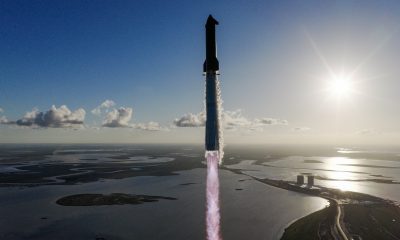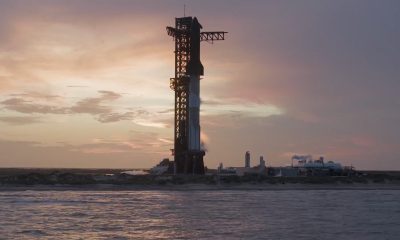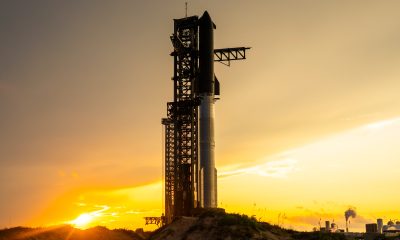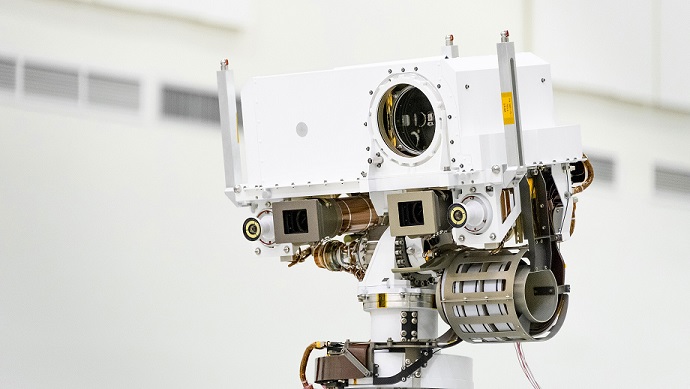
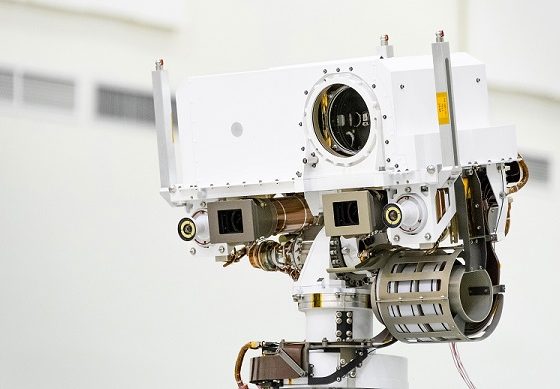
Space
NASA gears up Mars rover for perfect 20/20 ‘SuperCam’ vision ahead of mission to red planet
NASA engineers are busy preparing the agency’s next Mars rover for its upcoming journey to the red planet. The six-wheeled robot will scour the Martian surface to look for signs of life. Deemed essential by NASA’s administrator, the mission is progressing as planned in order to meet a July launch.
The Perseverance Mars rover will land on Mars in February 2021, touching down in an ancient river bed called Jezero Crater. The 28-mile-wide crater is the site of an ancient river delta, and as such, scientists believe it could harbor fossilized life. That’s because the region is home to mineral deposits like hydrated silica, which is a preservative material here on Earth.
To help it search out key mineral deposits, the rover is packing a suite of scientific instruments, including some specialized cameras. The rover was built at NASA’s Jet Propulsion Laboratory in California but was shipped to its Florida launch site earlier this year.
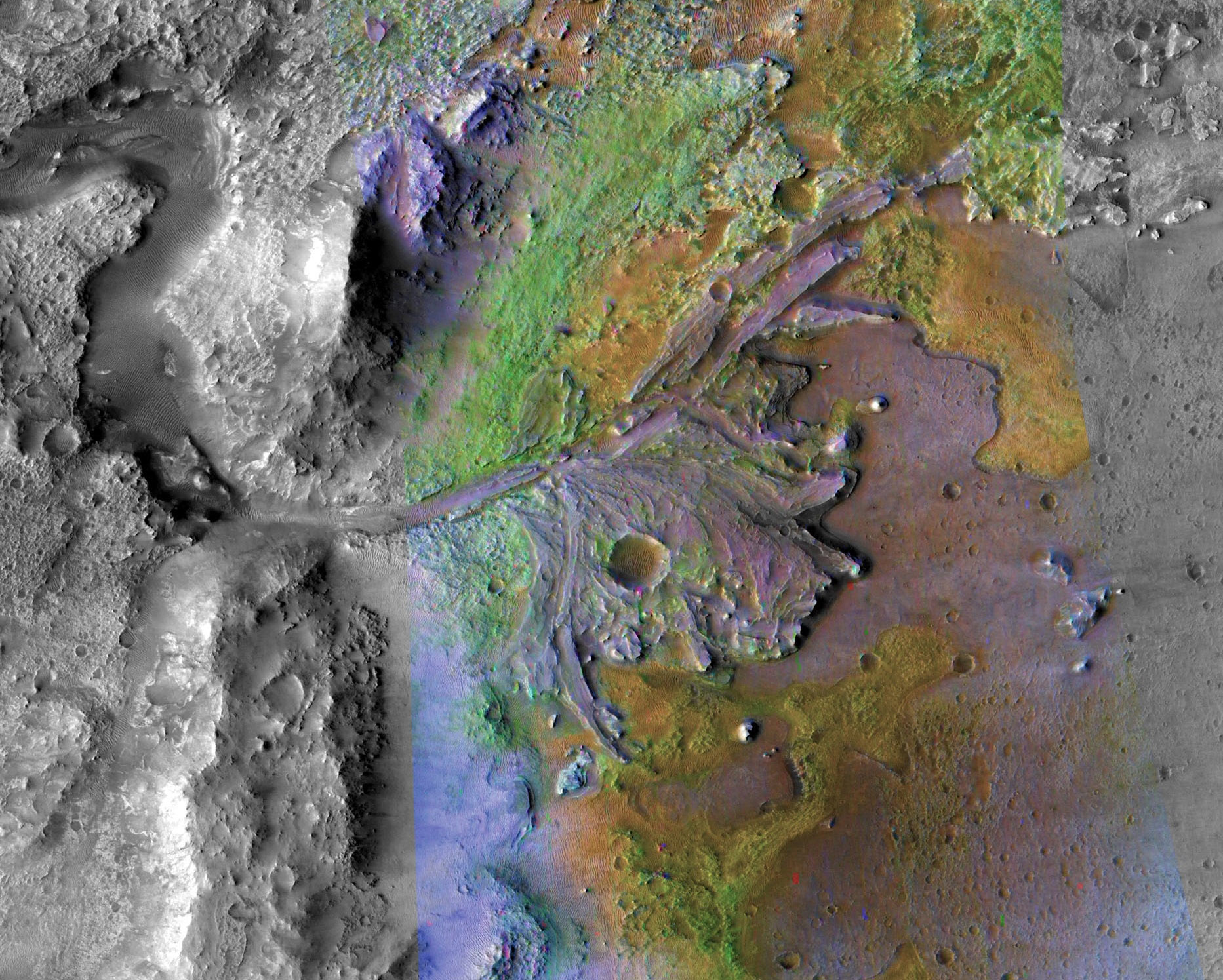
Since its arrival, engineers have begun reassembling the rover and preparing it for flight. It will not be flying solo to the red planet, but instead, will be accompanied by the first interplanetary helicopter. Approximately the size of a softball, the Mars helicopter has passed pre-launch testing and was recently installed on the belly of the rover.
The rover, however, still has a few more milestones to complete before its ready to be tucked into its aeroshell and loaded into the launch vehicle. To that end, the rover recently had its vision tested.
Perseverance is packing multiple cameras that have a range of imaging capabilities from wide-angle cameras capable of capturing sweeping vistas to a narrow-angle, high-resolution camera capable of zooming in on details on the Martian surface.
The rover will use the SuperCam (along with its laser and spectrometers) to examine Martian rocks and soil, looking for organic compounds that could indicate past life on Mars.
So how does one test a rover’s vision? With a giant grid of dots.
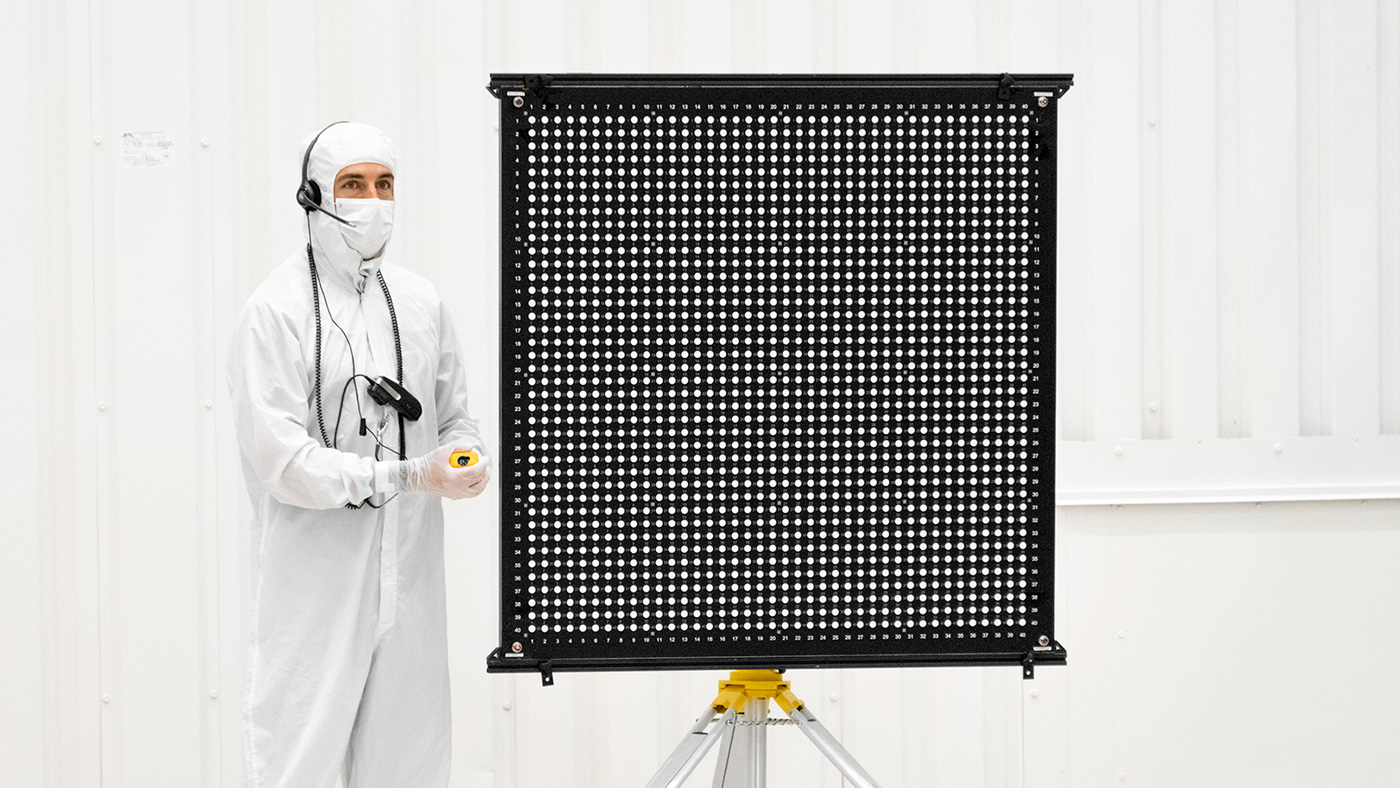
The rover’s vision was first tested back in July 2019 at the Jet Propulsion Lab and then rechecked once the cameras were installed at NASA’s Kennedy Space Center in Florida. The rover’s main camera, called the SuperCam, is installed on the rover’s head. It appears as a large circular opening, and this is the lens. Underneath it are two grey boxes that are two Mastcam-Z-imagers, and on the outside of those boxes are two more cameras used for navigation.
“We completed the machine-vision calibration of the forward-facing cameras on the rover,” Justin Maki, chief engineer for imaging and the imaging scientist for Mars 2020 at JPL, said during the test. “This measurement is critical for accurate stereo vision, which is an important capability of the vehicle.”
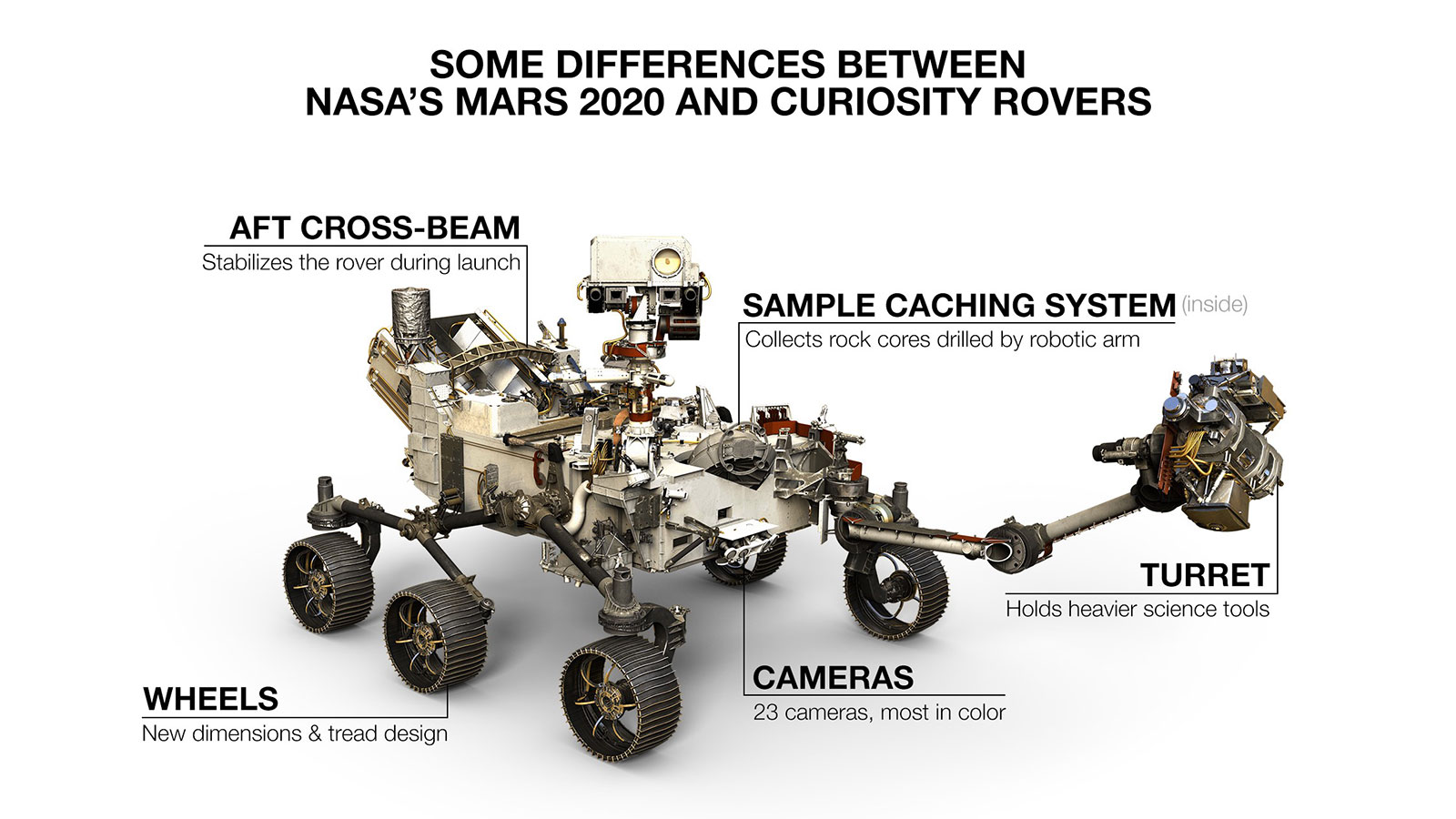
To calibrate the imagers, target boards that feature grids of dots were imaged and placed at distances ranging from 1 to 44 yards (1 to 40 meters) away. Those boards were used to confirm that the cameras meet the project’s requirements for resolution and geometric accuracy.
“We tested every camera on the front of the rover chassis and also those mounted on the mast,” Maki said. “Characterizing the geometric alignment of all these images is important for driving the vehicle on Mars, operating the robotic arm, and accurately targeting the rover’s laser.”
But the work isn’t done yet, the imagers on Perseverance’s body and arm will happen in the coming weeks.
News
SpaceX opens up free Starlink service for those impacted by Hurricane Melissa

SpaceX is opening up its internet service, Starlink, to those impacted by Hurricane Melissa, as it made landfall in Jamaica and the Bahamas as a Category 5 storm.
Hurricane Melissa is expected to reach wind speeds of over 165 MPH over the next few days as it extends out into the Atlantic Ocean by Thursday and Friday.
Satellite imagery shows Hurricane #Melissa‘s growth from its formation on October 21 to a Category 5 hurricane through October 27, 2025. #HurricaneMelissa pic.twitter.com/goR3Hbgb9c
— The Weather Network (@weathernetwork) October 27, 2025
Citizens in Jamaica and the Bahamas have been preparing for the storm for the past week, getting necessary goods together and preparing for the massive storm to arrive. It finally did yesterday, and the first images and video of the storm are showing that it could destroy many parts of both countries.
Starlink is now being opened up for free until the end of November for those impacted by the storm in Jamaica and the Bahamas, SpaceX announced today:
For those impacted by Hurricane Melissa in Jamaica and the Bahamas, Starlink service is now free through the end of November to help with response and recovery efforts → https://t.co/fUko3xSviJ
— Starlink (@Starlink) October 28, 2025
It is a move similar to the one the company made last year as Hurricane Helene made its way through the United States, destroying homes and property across the East Coast. SpaceX offered free service for those impacted by the destruction caused by the storm.
The free Starlink service was available until the end of 2024.
Elon Musk’s companies have also made similar moves to help out those who are impacted by natural disasters. Tesla has offered Free Supercharging in the past, most notably during the California wildfires.
Tesla and SpaceX’s LA fire relief efforts: Cybertrucks, free Starlink and more
One major advantage of Starlink is that it is available for use in situations like this one, where power might be required to operate things like a modem and router.
Internet access is a crucial part of survival in these situations, especially as it can be the last leg some stand on to get in touch with emergency services or loved ones.
News
SpaceX reaches incredible Starlink milestone
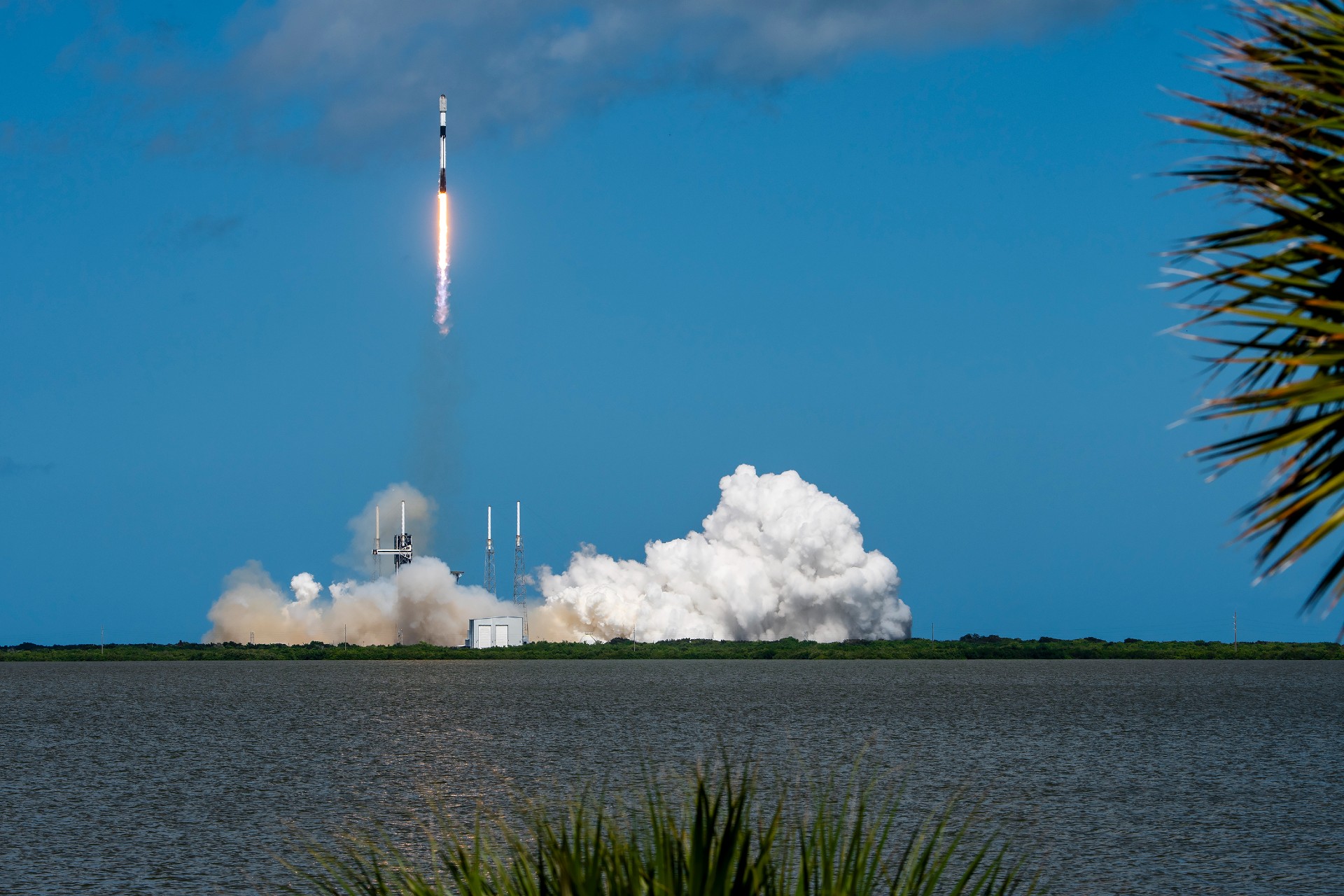
SpaceX has reached an incredible milestone with its Starlink program, officially surpassing 10,000 satellites launched into low Earth orbit since starting the program back in 2019.
Last Sunday, October 19, SpaceX launched its 131st and 132nd Falcon 9 missions of 2025, one from Cape Canaveral, Florida, and the other from Vandenberg, California.
The 10,000th Starlink satellite was aboard the launch from California, which was Starlink 11-19, and held 28 v2 mini optimized satellites.
The achievement was marked by a satellite tracker developed by Jonathan McDowell.
🚨 With its Falcon 9 launch last Sunday, SpaceX officially has 10,000 Starlink satellites in orbit pic.twitter.com/xS5RVZ4ix0
— TESLARATI (@Teslarati) October 26, 2025
The first Starlink launch was all the way back on May 23, 2019, as SpaceX launched its first 60 satellites from Cape Canaveral using a Falcon 9 rocket.
Of the over 10,000 satellites in orbit, the tracker says 8,608 are operational, as some are intentionally de-orbited after becoming faulty and destroyed in the atmosphere.
SpaceX has truly done some really incredible things during its development of the Starlink program, including launch coverage in a global setting, bringing along millions of active subscribers that use the service for personal and business use, locking up commercial partnerships, and more.
Starlink currently operates in around 150 countries, territories, and markets and is available at least somewhere on all seven continents.
Additionally, Starlink has over 5 million subscribers worldwide, and 2.7 million have joined the program over the past year. It has revolutionized internet access on commercial aircraft as well, as several high-profile airlines like Qatar and United, among many others, have already installed Starlink on some of their planes to deliver more stable connectivity for passengers and crew.
SpaceX has the approval to launch 12,000 Starlink satellites from the FAA, but it plans to bring over 30,000 to its constellation, giving anyone the ability to have access to high-speed internet.
Elon Musk
SpaceX aces Starship’s 11th launch with success in every mission objective
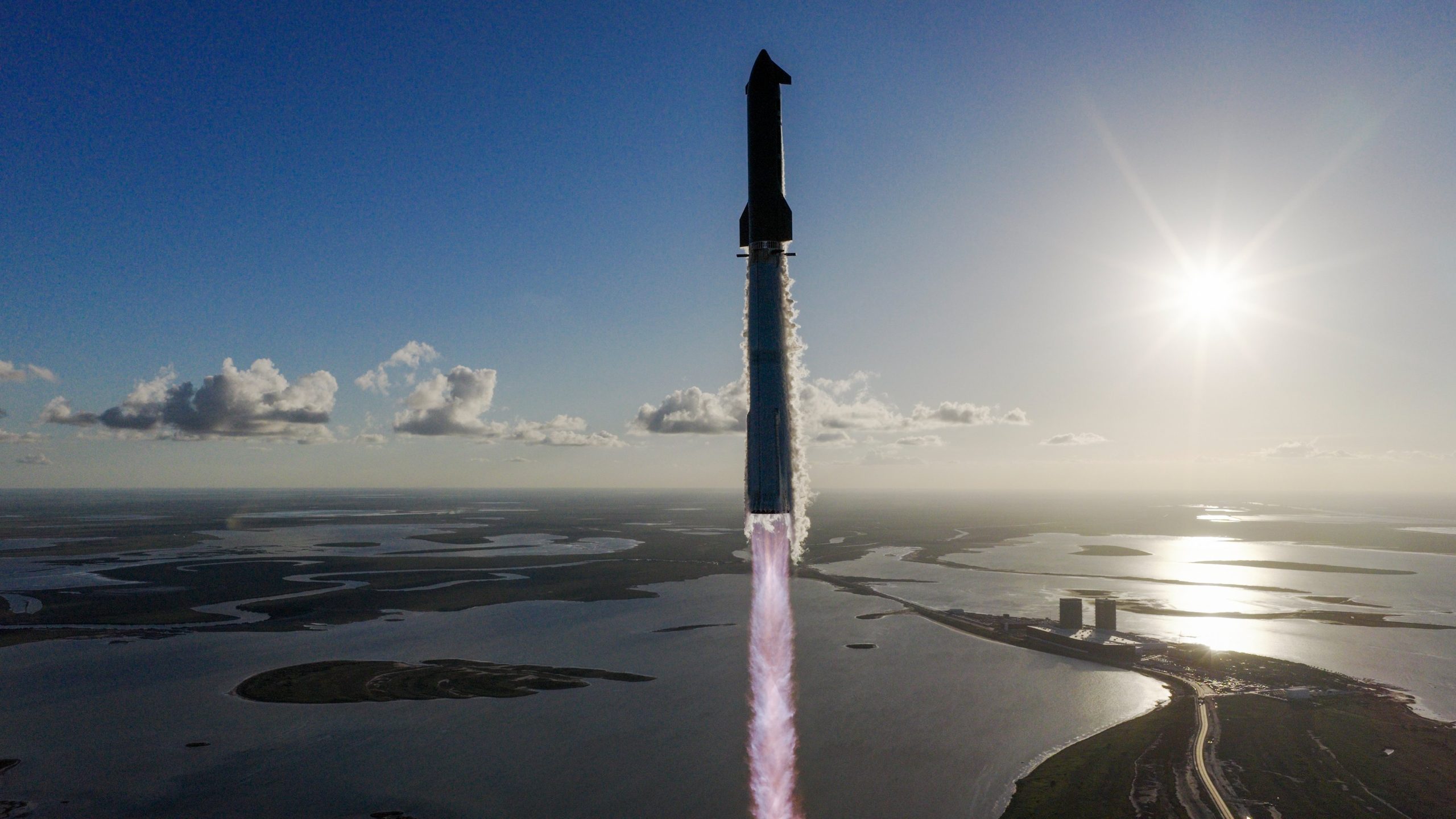
SpaceX aces its eleventh Starship test launch on Monday evening, marking the company’s second consecutive takeoff that crossed off each of the planned mission objectives.
It was also the final launch of the V2 Starship rocket. The twelfth test flight will feature the larger V3 Starship rocket, followed by V4, which will eventually make the first trip to Mars.
The launch was overwhelmingly successful. In its 12th test flight, SpaceX was able to achieve every major mission objective, including the second successful deployment of Starlink satellite simulators and the relight of a Raptor engine while in space. The latter achievement demonstrated “a critical capability for future deorbit burns,” the company said.
The ship officially launched at 6:23 p.m. local time in Starbase, Texas, with all 33 engines igniting and sending the Ship to space.
Liftoff of Starship! pic.twitter.com/sbfmGAEPa6
— SpaceX (@SpaceX) October 13, 2025
Stage separation occurred just over eight minutes later, and Super Heavy started its descent back to the Gulf of America, where it successfully splashed down. The first part of the launch was complete.
Starlink simulators were deployed about twenty-one minutes after launch, as the Pez dispenser sent the faux-satellites out to space without any issue:
Starship has successfully deployed our @Starlink simulators pic.twitter.com/muNMalZkbT
— SpaceX (@SpaceX) October 13, 2025
Perhaps the most anticipated part of the launch was with Starship’s banking maneuver and subsequent splashdown in the Indian Ocean.
Prior to Starship 11’s launch and successful re-entry and splashdown, SpaceX had lost a few vehicles during this portion of the previous flights.
However, the company had made tremendous improvements and has now aced two consecutive launches. On Monday, its approach and splashdown were both overwhelmingly successful:
Splashdown confirmed! Congratulations to the entire SpaceX team on an exciting eleventh flight test of Starship! pic.twitter.com/llcIvNZFfg
— SpaceX (@SpaceX) October 14, 2025
The re-entry phase of this particular Starship launch aimed to gather data on the performance of the heatshield, SpaceX said. The heatshield was intentionally stressed to its limits to determine how much it could withstand without failing.
SpaceX will now turn its focus to the next vehicles, including V3, which is larger, more capable, and will help the company gather even more information about its launches into space:
SpaceX unveils Starship V3, the rocket built to finally reach MARS
The new design features Raptor 3 engines and massive grid fins
Musk says it’s leaner, meaner, and READY for Mars pic.twitter.com/Wj8fBuXPIa
— RT (@RT_com) October 14, 2025
CEO Elon Musk has said the third-generation Starship rocket will be built and tested by the end of the year.
-
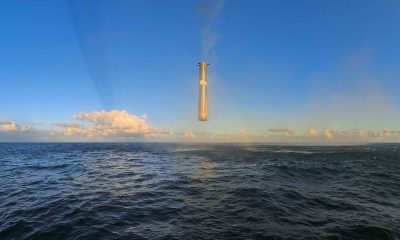
 Elon Musk2 weeks ago
Elon Musk2 weeks agoSpaceX posts Starship booster feat that’s so nutty, it doesn’t even look real
-

 Elon Musk2 weeks ago
Elon Musk2 weeks agoTesla Full Self-Driving gets an offer to be insured for ‘almost free’
-
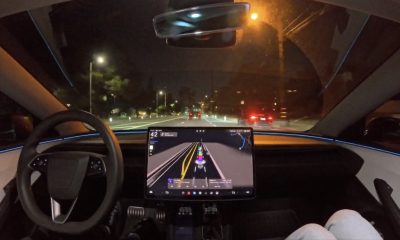
 News2 weeks ago
News2 weeks agoElon Musk confirms Tesla FSD V14.2 will see widespread rollout
-

 News2 weeks ago
News2 weeks agoTesla is adding an interesting feature to its centerscreen in a coming update
-

 Elon Musk2 weeks ago
Elon Musk2 weeks agoTesla CEO Elon Musk’s $1 trillion pay package hits first adversity from proxy firm
-

 News2 weeks ago
News2 weeks agoTesla might be doing away with a long-included feature with its vehicles
-

 News2 weeks ago
News2 weeks agoTesla updates fans on its plans for the Roadster
-

 Elon Musk2 weeks ago
Elon Musk2 weeks agoAfter moving Tesla to Texas, Elon Musk is back in the Bay Area with Neuralink expansion


